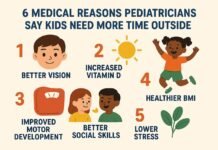Fathers have traditionally been type-cast as parents with ‘limited involvement’ in day to day parenting, but over recent years we’ve started to experience a generational shift. In 2023 fathers are finally breaking free from societal stereotypes and embracing their new roles and responsibilities. This shift has highlighted the role of dads and their importance in being nurturing, involved, and active parents in the lives of their children. In this blog post, we will explore the changing landscape of fatherhood in 2023 and what we can do to further the role of modern day dads even more.
The Rise of Active Fathers
Gone are the days when fathers were merely breadwinners, leaving the bulk of child-rearing duties to their partners. In recent years, there has been a significant rise in the number of fathers actively participating in their children’s lives. In our own Dad Index research, we found that 9 in 10 dads are ‘actively involved’ in day to day parenting, and are more hands-on, taking on tasks such as diaper changing, feeding, and bedtime routines with a strong sense of being an equal care giver.
They actively seek to bond with their children, recognizing the profound emotional and developmental benefits of their involvement. This increased involvement is due to a variety of factors. Shifting societal attitudes towards gender roles have played a crucial role, with more emphasis on equality and shared responsibilities. Millennial and Generation Z fathers, having grown up in a world that celebrated diversity and inclusivity, are embracing the idea of active fatherhood as a natural part of their lives. Additionally, leading organizations and communities have begun recognizing the importance of supporting fathers, offering parental leave, flexible working arrangements, and resources specifically tailored to their needs.
Fatherhood and Emotional Connection
In the past, fathers were often perceived as emotionally distant figures, and often depicted as strong, stoic figures with limited involvement in their children’s lives. However, in 2023, we are witnessing a growing emphasis on a stronger emotional connection between fathers and their children. Dads are now more attuned to the emotional needs of their kids, and are actively involved from early days, whether it’s picking from the best baby walkers or reading, and more.
This emotional connection fosters a sense of security, trust, and self-esteem in children. It also sets a positive example for future generations, demonstrating that vulnerability and emotional expression are not limited to any gender.
We’re now also seeing more diverse representations of fathers in popular culture, breaking stereotypes and challenging societal norms. Everything from films, advertising, and wider entertainment has started showcasing fathers in more caring roles when it comes to their parenting.
The Benefits of Involved Fatherhood and the future
Research on the father effect consistently highlights the positive impact of involved fathers on child development. Children with actively engaged fathers exhibit improved cognitive and language skills, enhanced emotional regulation, and stronger social connections.
However there are still a number of areas that could be improved for dads:
1. Challenging Gender Stereotypes: Although societal attitudes have evolved, certain stereotypes persist, such as the assumption that fathers are primarily providers and mothers are the primary caregivers. By actively recognizing and celebrating the diverse roles that fathers play in their children’s lives, we can challenge these stereotypes and promote more equitable gender expectations.
2. Equalizing Parental Leave: Parental leave policies are an important aspect of recognizing the roles of both parents. While many countries have made progress in providing parental leave for both mothers and fathers, there are still places where the leave provided for fathers is significantly shorter or less supported. Ensuring equal and adequate parental leave for fathers allows them to bond with their children during the crucial early stages and actively participate in caregiving responsibilities.
3. Promoting Work-Life Balance: Balancing work and family life can be a challenge for fathers, just as it is for mothers. Flexible work arrangements, such as remote work options, flexible schedules, and shared responsibilities, can enable fathers to be more present and engaged in their children’s lives. Employers and organizations should continue to create a supportive environment that encourages fathers to prioritize family alongside their professional commitments.
4. Encouraging Positive Media Representations: Media plays a powerful role in shaping societal perceptions. It is important to ensure that positive and diverse representations of fathers are depicted in various forms of media, including television, films, advertisements, and literature. By showcasing fathers as capable, nurturing, and involved caregivers, we can challenge existing stereotypes and foster greater recognition of their essential role.
5. Providing Support Networks: Creating support networks specifically tailored to fathers can be invaluable. Peer groups, community organizations, and online forums can offer a space for fathers to share experiences, seek advice, and find solidarity. These support networks not only validate fathers’ experiences but also provide opportunities for learning and growth.













